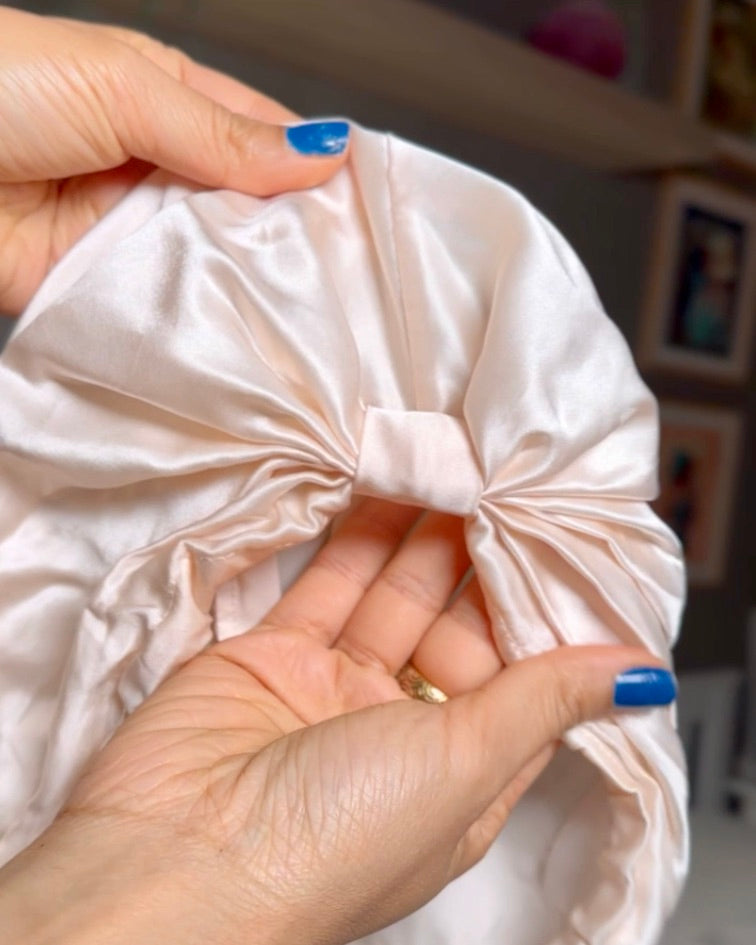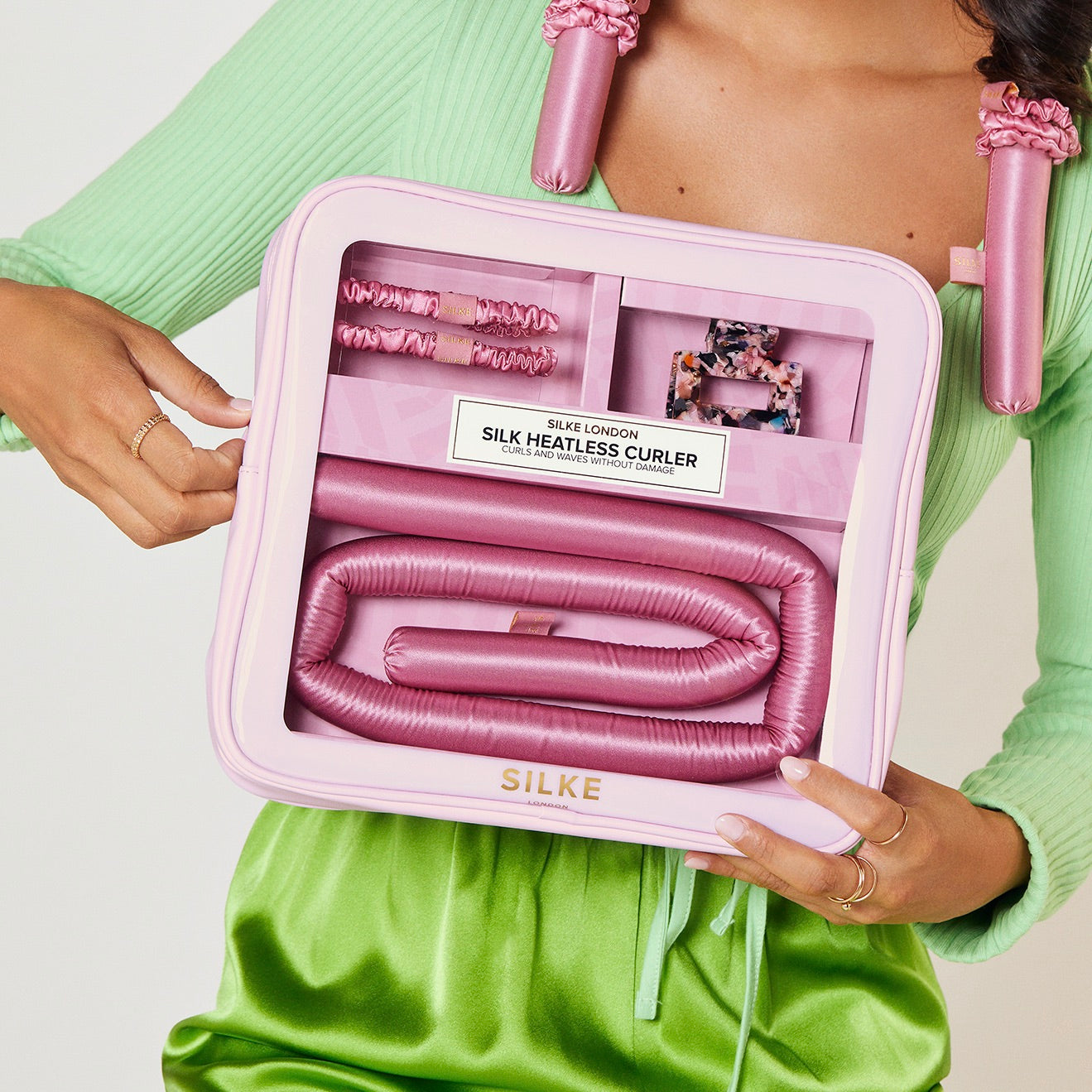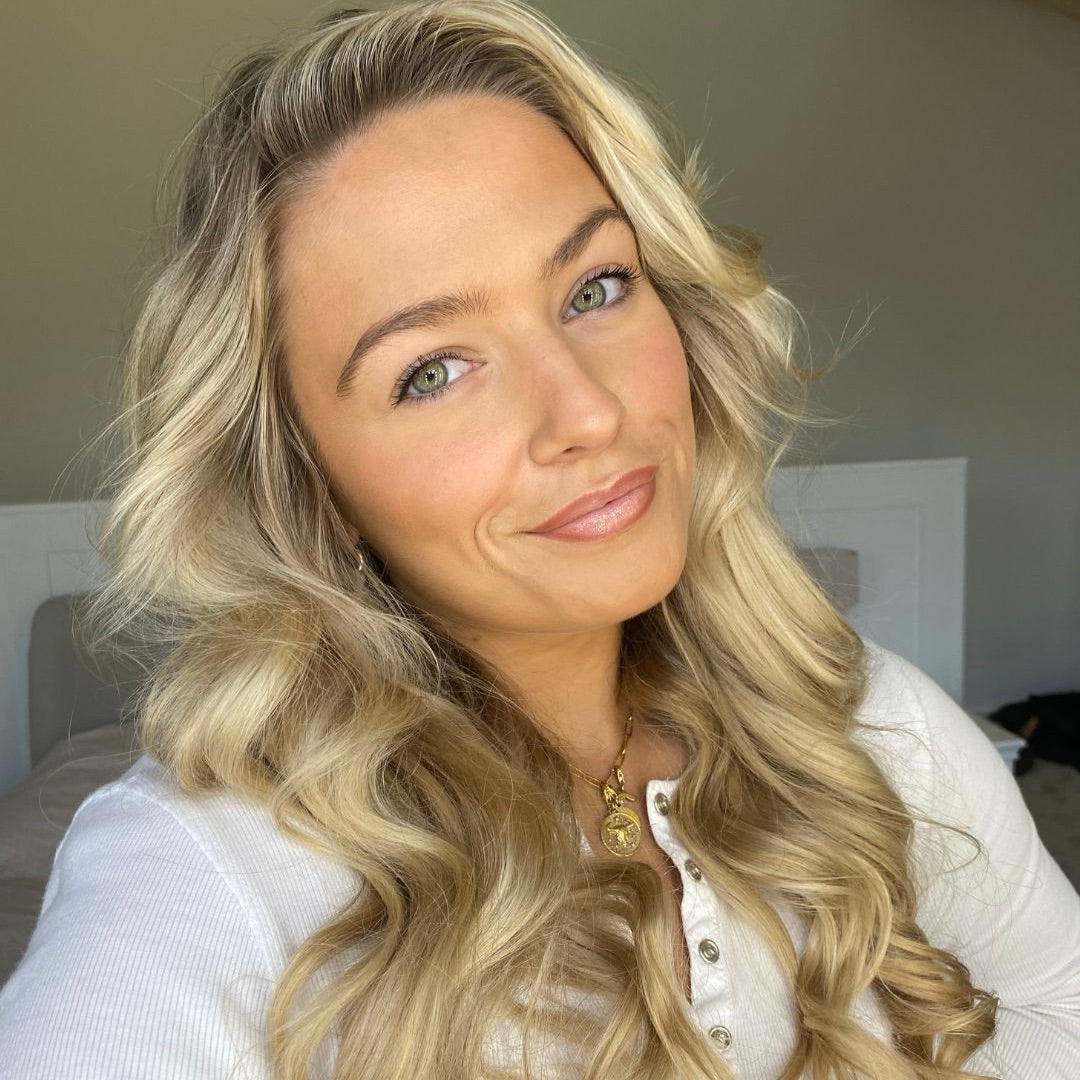
How To Clean Silk
At SILKE London HQ one of our commonly asked questions is ‘how do I clean my silk’?
Why do we use 100% silk?
When our co-founder, and hairstylist with over 37 years of hair industry experience, Maria Sotiriou, realised that the damage and breakage she was experiencing was happening in her sleep after waking up each and every morning with little broken hairs scattered over her pillow, she took inspiration from her Caribbean heritage and developed the SILKE London Hair Wrap.
Before developing her own hair wrap, Maria scoured the hair market for products to wrap her hair and found it inundated with synthetic, satin versions of bonnets and turbans.
After testing out a number of these options she concluded that a satin hair wrap just wasn’t going to cut it for her hair. Satin is a cheaper, synthetic mixed weave fabric, and whilst it can tick a box when it comes to creating a physical barrier between your hair and the abrasive fabrics of your pillowcase, it doesn’t do much else for your hair. It might even contribute to the damage further! Whilst it’s not as bad as a cotton pillowcase, satin is still an absorbent fabric so it’ll still strip your hair of its natural oils and moisture. It’s also non-breathable which can get hot and stuffy in hotter climates and throughout the summer.
Maria discovered that silk on the other hand behaved completely differently, and was somewhat of a miracle fabric for your hair and skin. Silk is a 100% natural fibre which is completely non-absorbent. This means that instead of losing your hair’s natural oils and moisture overnight, by wrapping your hair in 100% silk, your hair can actually benefit from them instead.

How Silk Transforms Hair
When your hair is cocooned in your hair wrap made from 100% mulberry silk, the natural oils produced at the scalp can be distributed evenly from the roots to the ends of your hair. Not only does this prevent oil build up at the roots, which causes greasy hair, but your hair creates its own natural ecosystem where it can hydrate and moisturise itself with no need for excessive hair routines or products.
Silk was first created in China over 5000 years ago, and evidence shows that the process of making silk was happening as early as 6000 BC. Silk thread contains a special type of protein that’s removed during the processing of the silk called sericin. During this removal process, there’s a protein left behind in the material called fibroin, which is rich in 18 amino acids.
When you wrap your hair in silk, or sleep on it in the form of a pillowcase, your skin and hair benefit from the amino acids. Many luxury beauty and hair products extract this silk protein and add it to their products, so why not benefit straight from the source?
Similarly to a satin option, a silk bonnet acts as a physical barrier. However, because it’s not an absorbent fabric, it’s not abrasive or slippery. It encourages your hair cuticles to lay nice and flat, meaning no unwanted frizz, or bedhead come morning.
With all this knowledge and history in mind, as well as her connection to her heritage and traditional Caribbean methods, Maria knew there was no other material to choose from when it came to creating the SILKE London Hair Wrap.
They’re made from 100% mulberry silk and designed to look so beautiful that you feel just as comfortable wearing them to bed as you do out and about. Celebrities such as Beyonce and Rihanna have been spotted wearing hair wraps at the beach to protect their hair from environmental stressors such as UVA + B rays, salt water, wind etc, and Maria often wears hers around London when it’s wet and windy!
They’re not just for bedtime, however we do spend a third of our lives in bed, so why not make it count?

Washing Your Wrap: How To and How Often
Wearing your Hair Wrap night after night leads us to a frequently asked question, ‘how do I clean my SILKE Hair Wrap?’. Maria says:
“How often you wash your Hair Wrap is a personal preference, but I think that the least amount of washing is best. Generally, I never wash mine, but if I did, it’d be one time only.”
Instead of washing it, Maria recommends:
“I would replace your SILKE Hair Wrap every 4-6 months as silk is a natural, delicate fabric and will wear over time, especially if you continually cocoon your hair nightly.
We have found that replacement at this point has seen a huge rejuvenation in the transformation of our clients hair due to the revitalisation and introduction of the fresh silk.”
Much like you replace your favourite items of clothing or beauty products once they’ve become worn or empty, your hero SILKE products are the same.
If you are looking to clean your Hair Wrap there’s no need to take them along with you on your trip to the dry cleaners. We would always recommend washing by hand and home. Maria says:
“A quick gentle hand wash is best for the delicate silk fibres. Stay clear of those tempting ‘hand wash cycles’ on your washing machine, they’re always too harsh and will compromise the silk fabric.”
Here’s exactly how to do it:
Step one - fill your bowl or sink with cool or cold water. You want to avoid warm and hot water as it’ll strip the colour from the silk.
Step two - add a quarter of a teaspoon of a gentle detergent of your choice. We’d recommend choosing an option that’s free of harsh chemicals.
Step three - place your SILKE Hair Wrap into the water and give it a gentle stir.
Step four - leave for no longer than 5 minutes. Silk is known to release dirt very quickly, so no need to leave for any longer than that.
Step five - gently squeeze to release excess water. Never wring out or use a dryer on silk, as it’s a delicate fabric.
Step six - lay out flat on top of a towel and leave to air dry.
Top tips: avoid leaving your silk to dry in the sun as it’ll lose its colour, and once your silk is dry, we would recommend not ironing or steaming it. Laying it flat throughout the drying process should keep wrinkles and creases to a minimum, but once you’re back into the swing of wearing your Hair Wrap nightly, these will fall out fairly quickly!

How to Remove Stains From Silk
If you have any stains that need removing, we recommend opting for a natural, home-made solution as opposed to any store bought stain removers. Similarly to all the other tips and tricks we’ve highlighted, the key to handling any silk stains is gently.
To make a homemade solution you can mix 2 cups of lukewarm water with 2 tablespoons of either lemon juice or white vinegar. Pop your solution into an empty spray bottle and spritz directly onto the stain. Once it’s on, gently work into the stain using a sponge or double the fabric over. Opt for pressing motions and avoid any rubbing as this will disrupt the natural fibres in the silk causing unnecessary damage.
Generally, you can avoid stains by making sure your hair and hairline are as clean as possible when using your Hair Wrap nightly. Even though the Hair Wrap is great for prolonging the time between hair washing, it also improves the overall health and appearance of your hair, meaning you’ll need less styling products and goop, equalling less product build up, and cleaner hair for longer.
Finally, you want to know the best part about replacing your Hair Wrap every 4-6 months? Getting to choose a brand-new colour!
Love, SILKE xo









Leave a comment
This site is protected by hCaptcha and the hCaptcha Privacy Policy and Terms of Service apply.